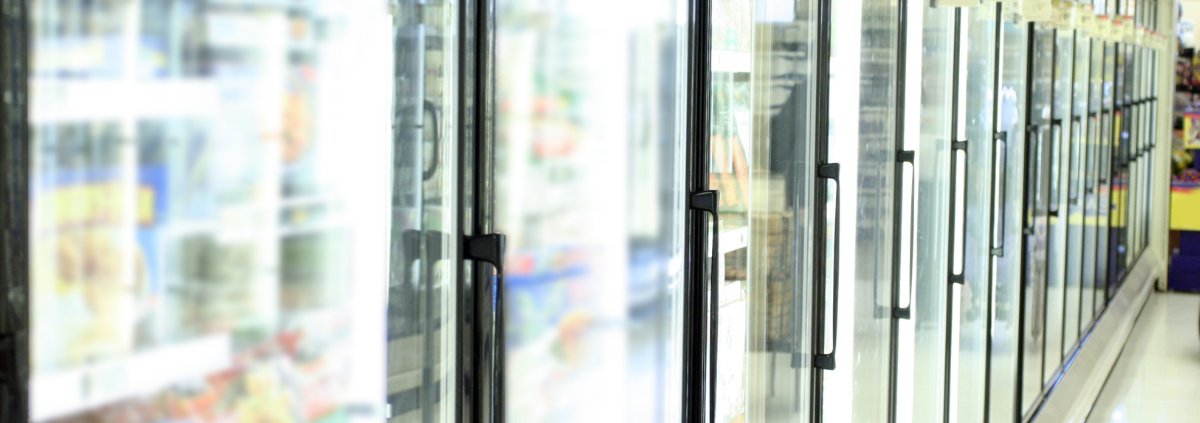 Canva Pro
Canva ProRetail and Convenience Store Toolkit
Retail and convenience stores can have widely varying energy use profiles depending on the type of products sold. In order to understand how to effectively save energy in your store, it’s a good idea to look at the individual areas of energy usage. For many stores, the biggest areas of energy consumption are refrigeration, lighting, and HVAC systems. Below are some energy efficient tips for each of these areas.
Refrigeration
Refrigeration, including display cases and cold storage, can contribute to a large part of a store’s energy load. There are many options when it comes to upgrading the efficiency of your refrigeration system, including closing display cases, adding strip curtains, replacing equipment, and adding efficiency controls.
- Change out open reach in display and refrigeration cases with glass door cases.
- Install night curtains on open display cases that you cannot change out.
- Install strip curtains on walk-in cooler doors.
- Install LED lighting within the cases. Fluorescent lights emit heat and LED bulbs do not.
- Clean condenser and evaporator coils. If coils accrue build up, it can block air flow. This can cause the system to use up to 90% more energy to stay cool!
- Insulate suction lines where appropriate. Suction lines transport refrigerant to the compressor. Keeping lines insulated prevents heat absorption by the refrigerant, meaning the whole system doesn’t have to work as hard to keep cool. Furthermore, insulation is inexpensive and easy to install.
- Replace old gaskets around doors. Old gaskets can lead to serious air leaks in a refrigeration system. These leaks can cause the system to work significantly harder in order to keep things cool.
- Replace shade pole fan motors with electronically commutated (ECM) fan motors.
- Install anti-sweat heater controls on reach-in doors.
- For more specific information on how to upgrade your system, please refer to the refrigeration toolkit.
Lighting
Lighting is often one of the greatest energy uses of a retail or convenience store. Luckily, it can also be one of the easiest areas to upgrade to see great energy savings. Switching to LED lights is one such upgrade. Additionally, lighting controls can be installed to further increase energy efficiency. Lighting controls, such as occupancy sensors, have the ability to adjust lighting to energy saving levels when rooms or areas are unoccupied. Occupancy sensors are great options for store bathrooms, utility closets, and in refrigeration case lighting, if applicable to your store.
Please refer to the energy efficient lighting toolkit for more information on how to choose the right lighting options for you.
 Heating and Cooling
Heating and Cooling
The HVAC system is another large energy consumer in a retail and convenience stores. Maintaining reasonable operating temperatures is essential for both customer and employee comfort. For specific information on improving the efficiency of your HVAC system, take a look at the HVAC System and HVAC Controls Toolkits. Some quick tips to ensure your HVAC system is running efficiently include:
- Clean and replace filters according to manufacturer’s directions to ensure that the HVAC system isn’t working harder than necessary.
- Use programmable thermostats to raise and lower temperatures according to building occupancy times.
- Ensure vents are free from obstruction so that air can circulate properly.
- Repair leaks and install insulation around duct and pipe lines.
- Schedule regular maintenance on your HVAC equipment to ensure its continued optimal operation.
